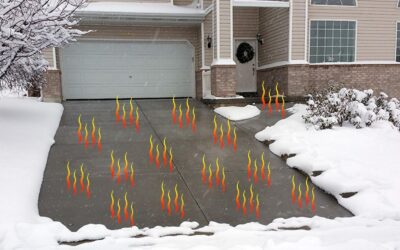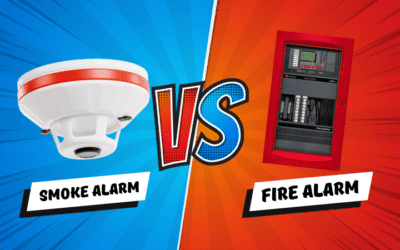As technology continues to advance, the concept of smart homes is gaining popularity among homeowners. One of the most practical and sought-after smart home devices is the smart light switch. It offers convenience and helps save energy, a top concern in today’s world.
In this article, we will explore smart light switches and discover their features, benefits, and how they can simplify the way we control our lights. Join us to learn more about an easy and cost-effective way to enhance your modern lifestyle.
Read more: Exploring the World of Smart Home Devices.
What is a Smart Light Switch?
Let’s begin by explaining what exactly a smart light switch is. This is a smart device that eliminates the need for manually flipping the light switch to illuminate your home. Using a smart light switch allows you to turn your lights on and off, dim your lights, or even set them to automatically go on or off remotely.
You can change your switches to the smart type without changing your lights. Some smart switches come with their own smart bulbs. It is important to mention that a smart light switch differs from a smart bulb. They both function the same way but smart bulbs come with higher costs.
Smart light switches typically establish connectivity through Wi-Fi, Z-Wave, or Zigbee protocols. When connected via Wi-Fi, the switch directly links to your router. On the other hand, Z-Wave and Zigbee connectivity require the presence of a smart home hub. While opting for the latter involves purchasing a separate hub, it also ensures that your smart light switch remains functional even during periods of internet downtime.
Access Options for Smart Light Switches
You can control your lights using a smart switch in multiple ways. In addition to the traditional manual button, these switches can be operated using voice commands through virtual assistants such as Alexa, Google Assistant, and Siri. However, the most advantageous feature of these switches is their ability to be controlled remotely. This can be done with a mobile app, web interface, or even wearable devices such as a smartphone. Additionally, with the use of automation, you can even set your lights to turn on and off automatically without any manual intervention. Whether you prefer a hands-on approach or a more hands-free experience, smart switches offer a variety of control options to fit your lifestyle.
The following are access options for smart light switches:
- Manual button
- Voice Control
- Remote Control
a. Mobile App
b. Web Interface
c. Wearable devices - Automation
Pros and Cons of a Smart Light Switch
In today’s tech-savvy world, using technology to simplify our lives has become popular. However, it is essential to weigh the pros and cons of every smart home device before integrating it into your lifestyle. For this reason, in this section, we have explained the pros and cons of smart light switches.
Pros
- Energy saving: Smart switches usually come with features like motion sensors and timers. By automating your lighting system, these switches ensure that lights are only active when necessary. The result? Reduced energy consumption, leading to lower electricity bills.
- Convenience: Probably the biggest benefit of every smart device including a smart light switch is added convenience. You can easily turn your lights on/off from anywhere without the need to physically touch the switch.
- Remote control: The ability to control your lights when you are not physically home. For example, you left your lights on but are at work; you can easily turn them off from anywhere.
- Security: Smart switches add a layer of security to your home. If you are going to be away from home, you can schedule your lights to go on and off giving the illusion that someone is there. This could deter potential break-ins.
- Dimming: Some smart switches come with a built-in dimmer allowing you to adjust the brightness of your lights to create the desired ambiance. This feature is particularly useful for setting the mood or saving energy when full brightness is not required.
- Motion sensor: This feature allows the lights to turn on automatically when they sense your presence in a room. This is a perfect option if you want the light to come on automatically.
Cons
- Reliance on technology: While the convenience and automation offered by smart light switches is remarkable, it also means that your lighting system becomes reliant on technology. Connectivity issues, power outages, or software glitches may temporarily affect your control over the lights. However, if your switches come with a manual button, this is not a concern.
- Installation: Installing a smart light switch can be an involved process, especially if you lack experience with electrical work. To ensure proper installation, you should seek the services of a professional electrician, adding to the overall cost.
- Cost: Although smart switches generally are not considered expensive, they do cost more than regular light switches. This can be an issue if you are on a tight budget.
- Compatibility: As mentioned earlier, some smart switches only work with their compatible light bulbs.
Wiring Requirements
Smart light switches require a certain type of wiring. Generally, these switches require a ground wire, an “in” wire, an “out” wire, and a neutral wire to function properly. While most households already have the necessary in, out, and ground wires, older homes might lack neutral wires. Typically, neutral wires are identified as a white wire or a cluster of white wires. However, if your home lacks a neutral wire, there are smart light switches available that can be installed without one.
Three-Way Switches Vs. Single-Pole Switches
It is good to know the difference between single-pole and three-way switches before buying a smart light switch. If a light fixture is operated by multiple switches, such as having a switch at the top and bottom of a staircase, a three-way smart light switch is required. But if there is only one switch that controls the light, you can use a single-pole switch.
However many smart light switch manufacturers, such as Lutron, now offer battery-operated remote or companion switches. This is a convenient solution if your smart switch does not have a three-way switch setup. These switches can be easily installed on your wall using screws or adhesive, without the need for wiring. It is an easy way to expand control over your lighting system without a complicated installation process.
Smart Light Switches and Remote Property Management
Aside from the benefits of using smart light switches for homeowners, this is the perfect technology for property management. With smart light switches, property managers can remotely access and control the lighting in their properties. Through a smartphone app or web-based interface, they can effortlessly turn lights on or off from anywhere in the world.
Additionally, property managers can receive alerts if there are any issues with the lighting system, such as bulb failures or connectivity problems. This proactive approach allows managers to address maintenance and troubleshooting needs promptly, reducing downtime and inconvenience for tenants.
Cost
Smart light switches are usually considered an affordable upgrading option for homeowners. According to Home Depot, they can cost anywhere from $15 to $549. However, you must keep in mind that some models require a central hub or compatible bulbs which will increase the overall cost.
On the bright side, incorporating smart light switches into your home can lead to reduced electricity bills. These switches ensure that lights are only on when needed, optimizing energy usage. By combining smart light switches with LED bulbs, you will see a significant savings in your energy consumption and bill.
Best Smart Light Switches in 2023
There are numerous smart light switches available on the market. We have picked three to share with you:
1. Lutron, Caseta Wireless Smart Lighting Dimmer Switch for Wall & Ceiling Lights
Features Include:
- Multiple buttons that can control power, dimming, and lighting scenes
- Compatible with Alexa, Google Assistant, Apple HomeKit, Samsung SmartThings, and more
- Does not require a neutral wire
- Works as a 3-way switch using the Pico remote that links to the Caseta bridge
- Dimmable
- Requires a central hub
- UL listed
- 1-year warranty
2. Leviton, Decora Smart 15 Amp Wi-Fi Smart Rocker Light Switch
Features include:
- Compatible with Alexa, Google Assistant, Apple HomeKit, Samsung SmartThings, and more
- Includes a built-in motion sensor
- Requires a neutral wire
- Works as a 3-way switch using the wireless DAWSC device
- Dimmable
- CSA certified, UL listed
- 1-year warranty
3. Brilliant, Smart Home Control 4-Switch Panel
Features include:
- Compatible with Alexa, Google Assistant, Apple HomeKit, Samsung SmartThings, and more
- In-wall touchscreen control
- Can be used for controlling other smart home devices like a smart key
- Includes a built-in motion sensor
- Requires a neutral wire
- Works as a 3-way switch
- Dimmable
- UL certified
- 1-year warranty
Conclusion
If you have made it this far, you now have a good understanding of smart light switches. We have covered all the basics and what you need to know about smart switches, whether you are a homeowner or a property manager. But before we wrap things up, there is one important point we want to emphasize: choosing the right smart switch is key to truly making your life easier.
If you want a less expensive option, consider buying a smart switch without a hub, make sure the device you purchase fits your home’s wiring, and, if you are a property manager, make sure to choose a smart switch that can be controlled with an app on your phone or computer. There is a lot to consider and if you are not an expert, you may find yourself spending hours researching to find the best smart switch. For this reason, we highly recommend always consulting with an expert before making a purchase.
We hope you have enjoyed this article and do not forget to leave a comment!










0 Comments